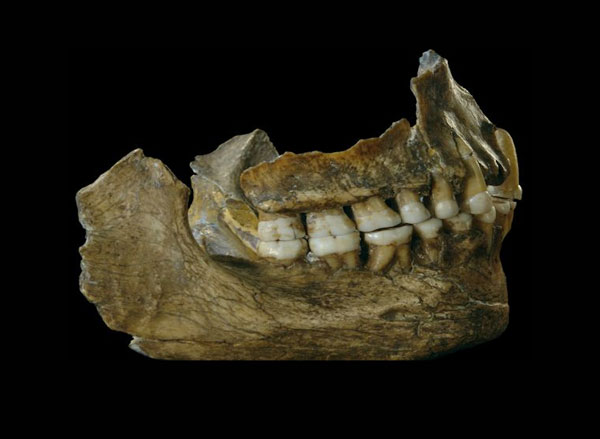
Professor Keith Dobney was part of a team of researchers who recently made the exciting discovery of ancient DNA found in the dental plaque of Neandertals from Belgium and Spain.
We caught up with Keith to find out more about what it was like to make this discovery and how it has opened up new ways of exploring the past.
Read the full news story about the DNA discovery, watch a video on the Business Insider website or find out more about our archaeology research.
Why is this area of research something you are particularly passionate about?
I’m passionate about cool new science and being able to ask and answer new questions about the past. One of the reasons I’m in this area is because I’ve been working on using dental calculus to explore past human diet and health for the last 30 years. But back then the discipline of ancient DNA didn’t exist.
So although our early (rather crude) work in this area showed us there was trapped food debris and remnants of the oral microbiome locked (and extremely well-preserved) in dental calculus on ancient human teeth, we didn’t have any way of identifying or quantifying it back then.
It’s only within the last few years, with new genetic techniques, that we can mine this new and rich stream of information about the evolution of human diet and health over deep time.
One of my early mentors (Professor Don Brothwell) was instrumental in coming up with new ideas like this and it was he who taught me to never give up on a good idea. He sadly died last September, but saw some of our early results and was as thrilled and excited as I was.

What was it like examining the Neandertal specimens?
We were extremely fortunate to have been allowed to have access to and to sample the Spy specimens in the Natural History Museum in Brussels, with help from the principal curator of the material there. Simply being able to see and handle the Spy specimens was a thrill for us, since as you can imagine, the remains of Neanderthals are relatively rare.
New discoveries are always exciting, that’s part of the fun of doing research. Finding out something new no-one knew before is a thrill, as is knowing that you’ve added something significant to understanding the past.
When you are part of the beginning of a completely new and novel approach, that is a great and rewarding feeling. There’s always something new to find out and that’s what gets me out of bed every day.
Now you’ve made this discovery – what next?
Since we’ve opened up this whole new way of exploring the past, there are many further questions to answer. As with every new technique that seems to be a 'silver bullet', many of the preliminary conclusions about exactly what we can do and how robust the data is, will need to be tested. So we will no doubt see a process of taking two-steps forwards and five steps back with this new discipline.
It is likely that many other groups will see the potential too and do even more exciting and ground-breaking research in this area. The most exciting prospect for me is seeing the relevance of diet and health data from the past feed into modern clinical studies and how we understand our own health today. This is certainly possible now that we’ve shown we can track the evolution of the human (oral) microbiome in time and space. Now that would be very cool indeed.